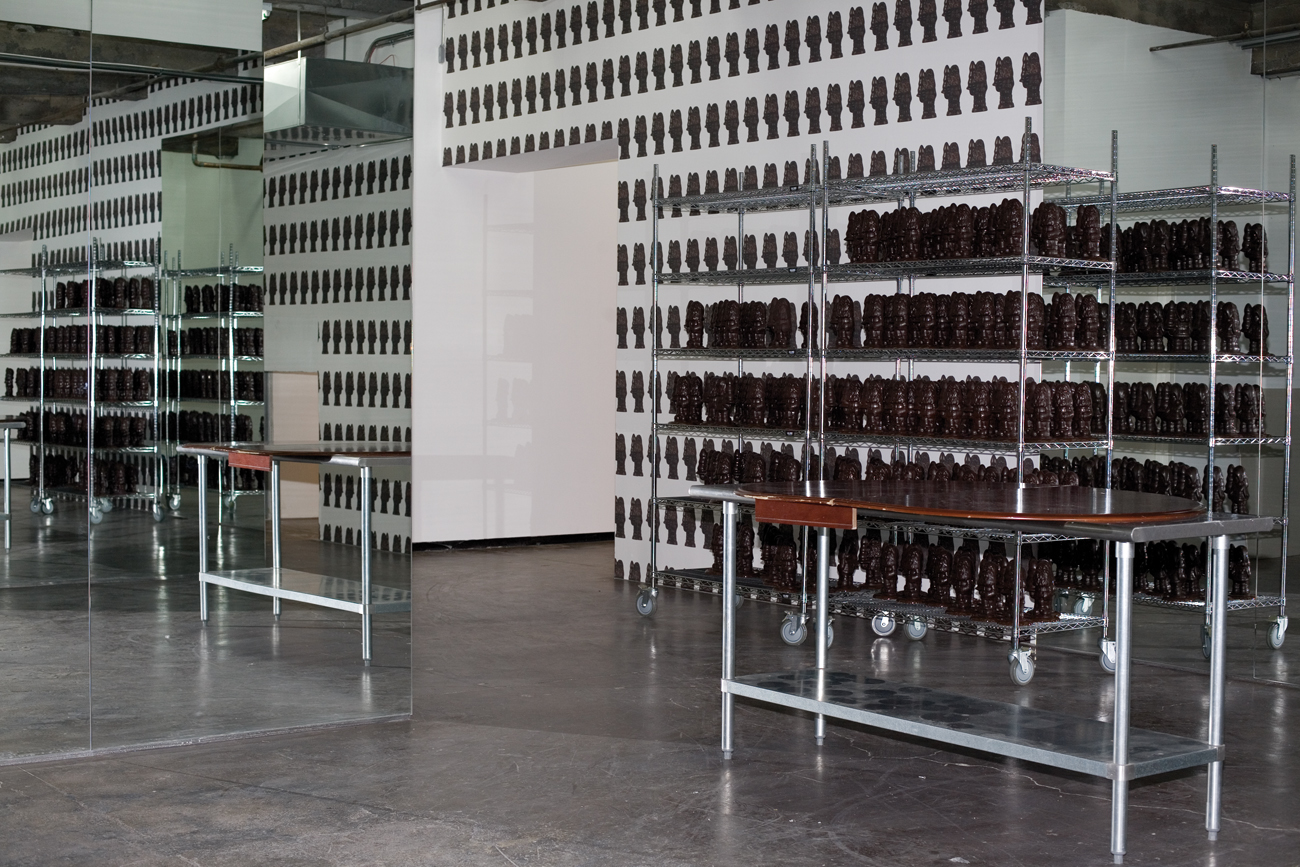Purple Magazine
— S/S 2008 issue 9
Paul McCarthy
the Peter Paul chocolate company
text by GLENN O’BRIEN
On november 19th I attended the opening of a chocolate factory in Manhattan’s West Village. There are many independent producers of gourmet sweets in the city, but I don’t think there’s ever been one like this. The Peter Paul Chocolate Company is engaged entirely in the manufacture of ten-inch, 14-ounce chocolate Santa Claus figurines. Each of which holds a butt plug approximately five inches in length. The company manufactures approximately a thousand Santas per day. They sell for $100 each.
This might seem like a stiff tariff for a piece of candy, but it’s made of premium chocolate produced by E. Guittard, the 140-year old luxury chocolate-making firm, using only pure natural ingredients. The Santas are also kosher. Still seem expensive? Well, it’s also art by a famous artist. Doesn’t it seem cheap now?
The Peter Paul Chocolate Company was…
